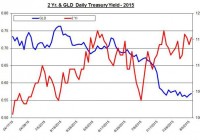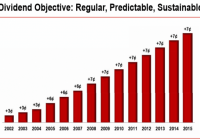ETFs To Move On Yuan Devaluation
China has been hitting headlines this year for one reason or the other. While the economy has been reeling under pressure for long given the protracted slowdown in the domestic manufacturing sector, credit crunch concerns and a property market slowdown, its stock market has been through a wild ride on overvaluation concerns. Meanwhile, the economy’s exports plunged 8.3% year over year in July, massively falling short of analysts’ expectation of a 1.5% decline as well as the 2.8% drop-off recorded in June. Though a 1.3% fall in exports to the U.S. was not that alarming, exports plummeted 12.3% and 13% in the EU and Japan, respectively. These two regions are presently under QE policy and thus see relatively weak currencies against the greenback. This gave the Chinese policymakers a wake-up call that it is high time to devalue its currency, yuan, to maintain the export competitiveness. As a result, China undervalued its currency yen against the U.S. dollar by a historic amount, i.e., 100 bps on August 11. Yuan has now plunged to the 2012 levels. Per Reuters , China’s central bank fixed the midpoint for its currency at 6.2298 per dollar, down from 6.1162 seen on August 10. The bank also indicated that it was eyeing a currency devaluation of 2%. As per Barrons.com , the Chinese government viewed yuan as an extremely strong currency. Given the looming Fed policy normalization and its depreciating impact on a basket of currencies, any shift in yuan ‘from market expectations’ seems unreasonable. However, such an epic move in the Chinese currency market will definitely leave an impact across the globe. Below we highlight a few asset classes and their ETFs, which may be among the biggest movers. Currency Needless to say, the move will lead the Chinese currency ETF, the WisdomTree Chinese Yuan ETF (NYSEARCA: CYB ), to losses while the dollar ETF, the PowerShares DB USD Bull ETF (NYSEARCA: UUP ), will gain strength. The Aussie dollar lost about 1% following the announcement, putting Australia ETF, the CurrencyShares Australian Dollar Trust ETF (NYSEARCA: FXA ), at risk. Per Reuters, the Australian dollar is often regarded as a liquid proxy for the Chinese currency. China is a major trading partner of Australia and thus the currencies of the duo share a high correlation. Currencies like the Singapore dollar, South Korean won and Taiwan dollar will be stressed as these countries are manufacturing destinations and thus act as competitors to China on the export front. Market experts apprehend a currency war among these Asian tigers in the near future. Gold How much more pain will gold have to bear? The yellow metal already crossed its five-year low level on its way down hit by the dollar strength thanks to the impending Fed rate hike, a deflationary environment prevailing in most part of the developed world and reduced demand from the key consuming nation China because of its waning economy. Now, currency devaluation will likely curb the import demand of gold from China as a feebler currency will turn imports pricier. The SPDR Gold Trust ETF (NYSEARCA: GLD ) tracking the gold bullion will bear the brunt the most, while the impact will not be unnoticed by the gold mining ETF, the Market Vectors Gold Miners ETF (NYSEARCA: GDX ). Apart from gold, several industrial metals will likely see a negative pricing trend in the near term as the Chinese economy accounts for about half of the global consumption of the industrial commodities and is the second-biggest purchaser of oil. The iPath Dow Jones-UBS Nickel Total Return Sub-Index ETN (NYSEARCA: JJN ), the UBS E TRACS CMCI Industrial Metals Total Return ETN (NYSEARCA: UBM ), the ELEMENTS Rogers International Commodity Metal ETN (NYSEARCA: RJZ ) and the United States Copper Index ETF (NYSEARCA: CPER ) are some of the ETFs which might succumb to a slowdown. Equities As we already know that the South Korean and Taiwanese economies thrive on exports, these nations will now be losing on currency competitiveness to China. There are several South Korean companies, namely Samsung Electronics ( OTC:SSNLF ), Hyundai Motor ( OTC:HYMLF ) ( OTC:HYMTF ), LG Corp. and Daewoo, which have big export markets and Taiwan houses one of the largest semiconductor companies in the world – Taiwan Semiconductor. In short, these two countries’ stock markets will be hit by the yuan devaluation in a passive way. This puts the iShares MSCI South Korea Capped ETF (NYSEARCA: EWY ), the Horizons Korea KOSPI 200 ETF (NYSEARCA: HKOR ) as well as the iShares MSCI Taiwan ETF (NYSEARCA: EWT ) and the First Trust Taiwan AlphaDEX ETF (NASDAQ: FTW ) in focus. While this move might help some Chinese sectors and equities, investors should note that most of the Chinese equities ETFs are not hedged to the greenback and thus may see some downward pressure on U.S. exchanges. Some Chinese equities ETFs to watch in the coming days are the Market Vectors ChinaAMC SME-ChiNext ETF (NYSEARCA: CNXT ), the Market Vectors ChinaAMC A-Share ETF (NYSEARCA: PEK ), the iShares China Large-Cap ETF (NYSEARCA: FXI ) and the iShares MSCI China ETF (NYSEARCA: MCHI ). Original Post

